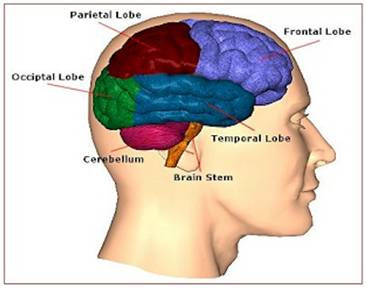Brain Research
Theresa London Cooper
For many years, I have been fascinated with the brain. My fascination has urged me to study brain research and how it relates to teaching, learning, and student achievement. I have identified a number of practical techniques and information that can be used in the classroom that I’d like to share with you. I’ve made my own connections, which are based in research and the experts in the field. I will offer you some of the resources I’ve found invaluable. Know that I have been selective in what I share with you as I have kept in mind what information would be useful to classroom teachers and your practice.
The first connection I’d like to make is with my previous article on background knowledge and the chart below. The chart comes from Jensen’s book Teaching with the Brain in Mind. I think this is important information we should have as we plan our lessons. As you view the chart, think about your planning. How does the information align with the time you spend on direct instruction of new content? According to Jensen, these guidelines are appropriate for what the brain can handle.
GUIDELINES FOR DIRECT INSTRUCTION OF NEW CONTENT
Grade Level |
Appropriate Amount of Direct Instruction |
K-2 |
5-8 minutes |
Grades 3-5 |
8-12 minutes |
Grades 6-8 |
12-15 minutes |
Grades 9-12 |
12- 15 minutes |
Adult Learners |
15-18 minutes |
Additionally, there are probably things you already do, but do not know that they are practices grounded in brain research. For example one of the things we often discuss in teaching and learning is the importance of multiple exposures. It is critical that we create opportunities for students to have multiple opportunities to practice what we want them to know. Think about the number of ways you can afford students multiple exposures throughout the year in every lesson.
The number of exposures helps to transition the information to permanent memory. According to Marzano (2004) there are three types of memory – sensory, working and permanent. We want our students to transfer essential concepts and core ideas into their permanent memory. But, we should understand that information comes in through our senses (sensory memory) that is very short term, but captures our attention. The working memory holds on to information as long as it’s active. Finally, with enough exposures, the information will transfer from our working memory to permanent or long-term memory. So, we must think about how we can make our students’ learning experiences memorable.
How do you get your students’ attention and maintain it until learning takes place? How do we assess the learning?
Another important notion to consider is nutrition. Nutrition plays a major role on how the brain functions. Some foods are characterized as brain foods as they affect the brain's performance. Additionally, the right foods sharpen memory, enable one to think more quickly, and improve concentration. Unless the child has a restricted diet, encourage your students to eat brain foods. Moreover, water helps remove toxins, and promotes concentration and mental alertness. Encourage your students to replace some of their drink preferences with water. If the brain is to function at optimal levels, it must be well hydrated.
What are the implications of this information for teachers?
You want to do your best to make sure your students have a healthy breakfast (oatmeal, bran cereals, eggs), lean meat such as chicken and beef; or fish such as tuna and salmon; fruits such as blue berries, cherries, strawberries, red grapes, apples; and vegetables such as broccoli, cauliflower, and collard greens for lunch. Some healthy snacks are walnuts, yogurt, and cheese to name a few. Collaborating with the nutritionist, parents, and the lunchroom staff can be helpful.
How can you support your students in practicing good eating habits? Who can you collaborate with to support your students in maintaining healthy eating habits?
The last major idea I’d like to share with you is one particular piece of information on brain research addressing the differences between boys and girls and the implication for teaching and learning. In general, boys require more movement and space to learn than girls do.
How much time do you allow for movement in your lessons? How do your lessons accommodate kinesthetic and tactile learners?
Although I did not address the parts of the brain, I do think it is important that as a professional you take time to view a few diagrams to build your background knowledge and identify the areas of the brain that relate to learning. Check it out.

Lastly, there are four books that I recommend you read:
- How the Brain Learns (2006) by David A Sousa
- Teaching with the Brain In Mind (2005) by Eric Jensen
- Brain-Based Strategies to Reach Every Learner: Surveys, Questionnaires, and Checklists that Help You Identify Students’ Strengths – Plus Engaging Brain-Based Lessons and Activities (2005) by J. Diane Connell
- Boys and Girls Learn Differently! (2001) by Michael Gurian (It comes with a guide)
Do you have a question or comment about this article? E-mail
Theresa.
|